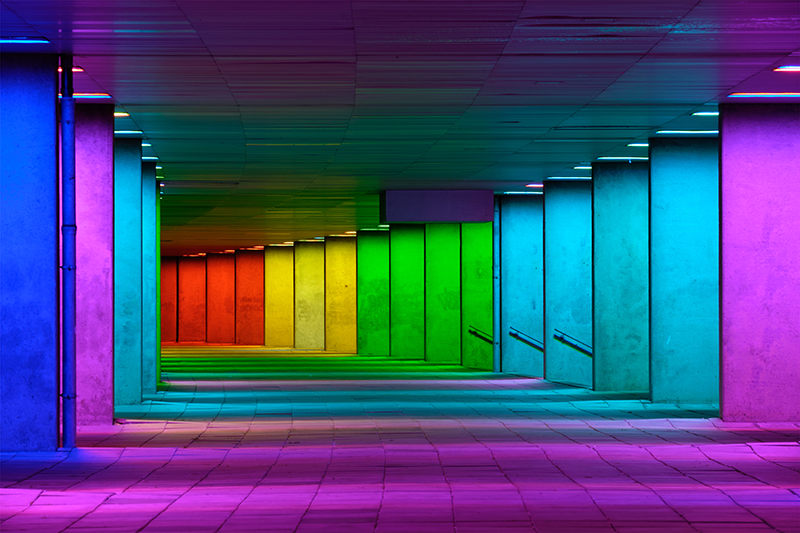Queering Public Space ' Inclusive Design for the Built Environment

The Role of Lighting
There are several ways in which spaces can be designed to be more welcoming and help people feel safer.
Lighting can contribute to safety and inclusion in public spaces. Studies have indicated that marginalised groups like'LGBTQ+ people'are particularly affected by nighttime vulnerability. This vulnerability is increased by poor design characteristics. Poorly lit, badly maintained and confined spaces can all convey a sense of danger. So, for marginalised groups, can harsh lighting.'
Lighting natural or architectural elements, such as plants or sculptures, create an atmosphere conducive to feeling safer.'
The report also states that security lighting is used ' as it is designed to ' to intimidate and exclude. In terms of brightness and light quality, an increased level of brightness will also not automatically make a space feel safer. The colour and finish of surfaces being lit can affect perceptions of brightness and sense of safety. Different atmospheres can be created with glossy/matte or black/white surfaces.'
Reflecting Inclusivity in Teams
Public space is overall designed by an architecture profession that in Britain remains overwhelmingly male and white. A declining number of British LGBTQ+ architects feel able to be out at work and 39 per cent of them in the most recent survey in 2017 reported discrimination and homophobia from colleagues.
This demonstrates that there is a need for a more inclusive approach to architecture in the workplace as well as in public spaces.
Project Lead Dr Azzouz recently told the Association for Project Management,'
'Project managers should seek diverse teams and encourage the participation of LGBTQ+ staff members in their projects when planning and designing spaces in our cities to better understand the challenges, needs, aspirations and hopes of LGBTQ+ people. Furthermore, project managers should engage with local LGBTQ+ communities to ensure their voice is heard and their needs are reflected in these projects.'
Diverse Design
Another point raised in the report is that good design should contribute to the desistance of hate crimes and incidents.'
Ways to do this include attention to the scale and mass of buildings, rooflines, colours and facades; the addition of curvilinear aspects; varied sightlines and the break-up of space; the softening of soundscapes and visual environments through the choice of surfaces, greenery and water features; the encouragement of footfall and pedestrian flow of a varied kind; design interventions that undermine dominant narratives; the nature, intensity, quality and positioning of lighting.
Preserving queer heritage in design is also important, as'helping to preserve the character of sites through listing and requirements built into planning guidance would help LGBTQ+ people to recognise themselves in the built environment.
Cosy Corners
Through conducting surveys of the lived experience of LGBTQ+ people in London and their interaction with public spaces, the research identified a demand for 'cosy corners'. These are private areas in public space, where users can see but not be seen.'
It is argued that LGBTQ+ people need more privacy in public space because common activities that most people take for granted (holding hands with a partner for example) can draw negative attention.
It is interesting that traditional public seating is aligned to facilitate gazing into the distance, rather than face-to-face interactions. However, the LGBTQ+ community is also a group that is more likely to live alone than their peers, and therefore are more reliant on support networks and socialising outside the home.
Symbols of Inclusion
Visible inclusion can be a powerful way of indicating support and undermining any public hostility towards the LGBTQ+ community.'
Symbols such as rainbow crossings, signal inclusion to LGBTQ+ people and help to usualise their presence. However, care should be taken to avoid such interventions becoming tokenistic cliches.'
Public art can be a way to achieve this. It can also break up space and provide colour, as well as adding to diversity in representation.
Queer heritage promotion through statues, memorials, plaques and street and building names are also recommended by the report.
Source: This Week in FM

